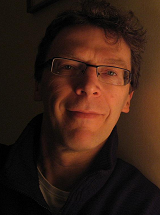TED Studies: Neuroscience - Mapping and Manipulating the Brain

Teachers and students can use TED Studies: Neuroscience to enhance existing curricula in undergraduate education courses. Educators and students will find activities and multimedia resources which link the study of Neuroscience to the real world, plus expanded academic content such as key terms, related journal articles and major debates in this highly topical area. For an abridged, interactive version of this content, subscribe to the TED Studies: Neuroscience course via the iTunesU course app for iPad by clicking here.

Introductory Essay
Join Professor David Price (University of Edinburgh) on a journey through a 'brief history of brain' science as he delves into the fascinating developments which underpin modern brain scanning techniques.
Jill Bolte Taylor's stroke of insight
Watch the 2008 TEDTalk “Jill Bolte Taylor's stroke of insight”. Harvard neuroanatomist and public educator Dr. Jill Bolte Taylor gives an emotionally-charged account of her experiences during the experiment-of-Nature inflicted on her when she suffered a stroke. She explains the conclusions she draws about the differences between the functions of the right and left hemispheres of the brain.
For transcripts, downloads, and other video options visit TED.com.
To flip this video, visit TED-Ed.
VS Ramachandran on your mind
Watch the 2007 TEDTalk by University of California San Diego Professor of Psychology and Neurosciences V.S.Ramachandran. In it you will learn about some of the highest cognitive functions of the brain and how and why they sometimes go wrong. In some cases, the results of abnormal brain development produce bizarre but not necessarily debilitating conditions, such as in the fascinating case of synesthesia.
For transcripts, downloads, and other video options visit TED.com.
To flip this video, visit TED-Ed.
Oliver Sacks: What hallucination reveals about our minds
Watch the 2009 TEDTalk “What hallucination reveals about our minds” by New York University School of Medicine’s Professor of Neurology Oliver Sacks. In it, he describes the hallucinations of some of his patients who have difficulty seeing and explains some of the biology that likely underlies their often staggeringly lucid imaginings.
For transcripts, downloads, and other video options visit TED.com.
To flip this video, visit TED-Ed.
VS Ramachandran: The neurons that shaped civilization
In this 2009 TEDTalk, University of California San Diego Professor of Psychology and Neurosciences V.S.Ramachandran describes a recently discovered set of brain cells that are active within an individual not only as he or she performs a particular action but also as he or she watches another individual perform the same action. As Ramachandran puts it, “…it’s as though this neuron is adopting the other person’s point of view”. These neurons have been called mirror neurons. Ramachandran argues that they allow the imitation of complex skills and hence the development of culture, which is the basis of civilization.
For transcripts, downloads, and other video options visit TED.com.
To flip this video, visit TED-Ed.
Sebastian Seung: I am my connectome
Watch the 2010 TEDTalk “Sebastian Seung: I am my connectome”. Massachusetts Institute of Technology Professor of Computational Neuroscience Sebastian Seung describes attempts to build a map of the bewildering complexity of connections within our brains, referred to as the connectome. His belief is that this map will offer a new way to understand our brains.
For transcripts, downloads, and other video options visit TED.com.
To flip this video, visit TED-Ed.
Christopher deCharms looks inside the brain
In this 2008 TEDTalk, Christopher deCharms, neuroscientist and chief executive of Omneuron, Menlo Park, California USA, shows us new methods for measuring a person's brain activation patterns using real time fMRI as the subject watches from inside the scanner using virtual reality goggles. Subjects are trained to control the patterns of activation inside their own brain, including those associated with pain. DeCharms coined the term Neuroimaging Therapy to describe this approach.
For transcripts, downloads, and other video options visit TED.com.
To flip this video, visit TED-Ed.
Ed Boyden: A light switch for neurons
Watch the 2011 TEDTalk “Ed Boyden: A light switch for neurons”, in which Massachusetts Institute of Technology Professor of Biological Engineering and Brain and Cognitive Sciences Ed Boyden explains the exciting concept of optogenetics and its potential therapeutic applications. We find out that research in this relatively new field aims to control the activity of specific sets of cells using light.
For transcripts, downloads, and other video options visit TED.com.
To flip this video, visit TED-Ed.
Rebecca Saxe: How we read each other's minds
While she was still a grad student, MIT’s Rebecca Saxe discovered a specific region of our brain that’s activated as we make moral judgments about other people and think about their thoughts. Saxe and her team are currently exploring whether it’s possible to change people’s moral judgments using transcranial magnetic stimulation, a noninvasive technique that transmits a magnetic pulse to a particular part of the brain and temporarily disorganizes the activity there.
For transcripts, downloads, and other video options visit TED.com.
To flip this video, visit TED-Ed.

